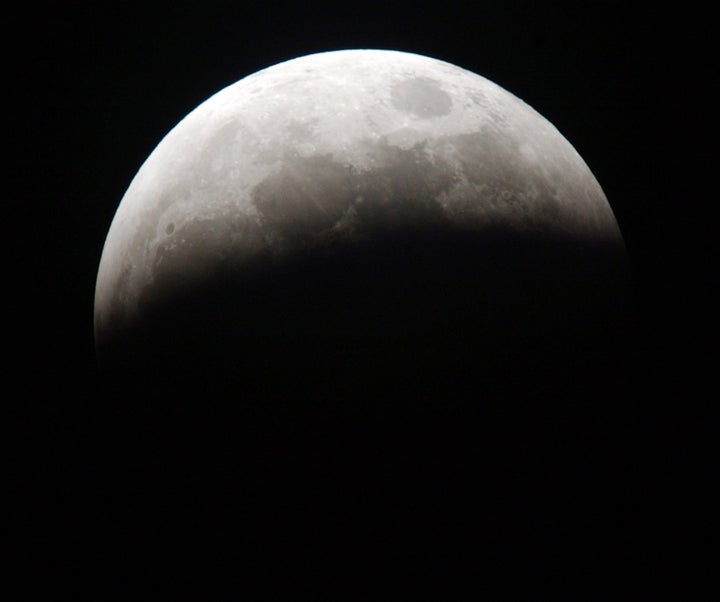
I've often fantasized about visiting the Bahamian beach where Columbus first stumbled ashore in 1492. Sadly, no one knows where that beach is. In fact, no one's even sure which island Columbus first encountered (there are three candidates).
It's a pity, a disappointment, and a lost revenue source for the Bahamians.
Now, more than a half-millennium later, there are some new beachheads to mark and preserve. NASA's Office of Commercial Exploration has been concerned about protecting the landing zones where humans first walked on the Moon, and one of my colleagues, ecologist Margaret Race, has been part of their deliberations. For those too young to remember, there were six lunar missions between 1969 and 1972, and among these, the touchdown sites of Apollo 11 (the first) and Apollo 17 (the last) are particularly resonant. Unlike most stories churned out in the daily news, what happened in these small bits of dusty real estate will interest every generation that follows us.
So what's the problem? You might assume that these small parcels are safely ensconced on a pockmarked, airless, and uninhabited world a quarter of a million miles away. Not a lot of worry there.
But the Moon's splendid isolation is bound to be temporary. The era during which only governments could put hardware on the Moon is coming to an end. There are 26 private teams competing for the $30 million Google Lunar X-Prize -- to be awarded for sending a robotic spacecraft to this nearby world that can roam at least 500 meters, and send back data such as a photo. There's also a $5 million bonus for documenting an historic, lunar landing site.
The teams competing for the X-Prize -- well aware of the cultural importance of these places -- have asked for guidelines on how to explore them. So these groups are not likely to cause any damage. But in another century, there might be a permanent human presence up there. Going to the Moon may be something that tourists do, tourists whose parents were not even alive when the first men landed in the Sea of Tranquility. These sites will no longer be safe merely because they're remote.
Admittedly, it would take industrial-grade chutzpah and a massive dose of malevolence for anyone to bulldoze the spot where Neil Armstrong stepped off the Eagle lander. But even innocent visits could be damaging.
"The biggest concern is rocket exhaust," says Race, "because landing spacecraft could sandblast everything as the engine stirs up the Moon's surface." Another problem is accidents -- an incoming rocket could inadvertently crash. This has led to specifying a restricted "air space" above the most important places.
Rovers -- rolling in for a close-up view -- could also cause problems, particularly as the lower gravity (and lack of air) mean that abrasive dust kicked up by the wheels goes high and moves fast.
"You may have to restrict the speed at which rovers could approach the site," Race says.
Not to mention the obliteration of boot prints, the taking of souvenirs, etc.
Sure, for people of good will, there's little cause for concern. But what about future visitors whose will is not so good, or who are simply indifferent or oblivious? Race argues that we should fill in some gaps in the legal structure governing cosmic exploration. That's the provenance of the Outer Space Treaty, which dates to 1967 and has been ratified by over 100 countries. According to the OST, the Moon cannot be claimed by any country -- it belongs to all humankind, in the way that Antarctica does. On the other hand, the spacecraft and other paraphernalia now placidly parked on its surface are the property of the governments that built them.
"So there's clearly a problem," says Race. "I mean, some people will point to a site and say, 'You don't own the real estate, so who are you to draw restrictive circles around your hardware?'"
Solving this and the other problems of preservation is probably not too difficult right now, since the whole issue is both new and -- to many people -- almost amusingly arcane. But Race believes strongly that we should do something soon. Otherwise, it's likely that we'll succumb to our historic modes of exploration: just barrel ahead, and damn the consequences.
It will be like settling the Americas, Race says. "Just do it, and then people will figure out what was done wrong later."
This cowboy approach is easy and, to some, even appealing. But a little proactive work might lead to outcomes that future generations will come to appreciate.
Think about it this way. You can't visit Columbus' landing spot. We don't know where Balboa first tasted the waters off the Darian coast to prove they were salty, or where the Pilgrims first stepped ashore in Massachusetts (it wasn't on that rock).
It's history without artifacts. But it needn't be. We can ensure that our descendants in the 23rd century -- most of whom will not know much about the wars or politics of our time -- will at least be able to gaze in awe at where their ancestors first made a big step for mankind.
The National Parks have been touted as "America's best idea." Perhaps it's time to craft a similarly enlightened idea at the international level -- to show appreciation of the truly promethean things that our species has done, and to safely bequeath them to those who follow.